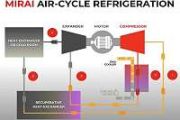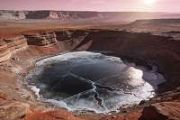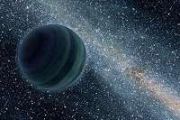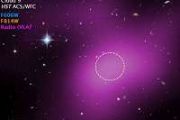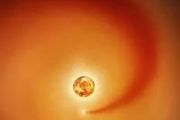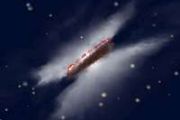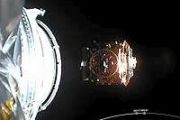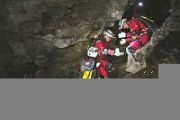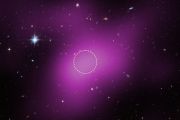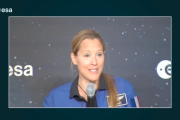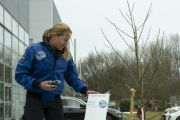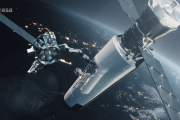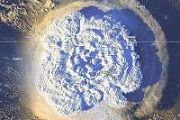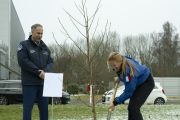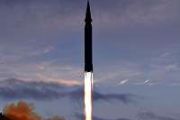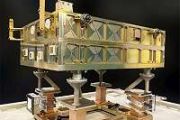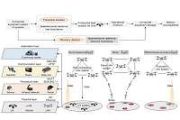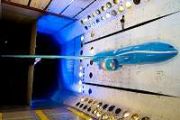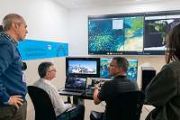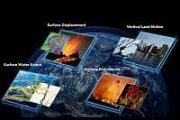
Copernical Team
NASA announces Unidentified Aerial Phenomena study team members
 NASA has selected 16 individuals to participate in its independent study team on unidentified aerial phenomena (UAP). Observations of events in the sky that cannot be identified as aircraft or as known natural phenomena are categorized as UAPs.
The independent study will begin on Monday, Oct. 24. Over the course of nine months, the independent study team will lay the groundwork for future
NASA has selected 16 individuals to participate in its independent study team on unidentified aerial phenomena (UAP). Observations of events in the sky that cannot be identified as aircraft or as known natural phenomena are categorized as UAPs.
The independent study will begin on Monday, Oct. 24. Over the course of nine months, the independent study team will lay the groundwork for future China to invest in major space programs
 China Aerospace Science and Technology Corp, the country's leading space contractor, will continue to invest in major space programs such as the manned lunar missions and the development of a super-heavy carrier rocket, said the company's chairman.
Chairman Wu Yansheng told reporters on Saturday that his company has set three goals for its future development - upgrading the existing rocket
China Aerospace Science and Technology Corp, the country's leading space contractor, will continue to invest in major space programs such as the manned lunar missions and the development of a super-heavy carrier rocket, said the company's chairman.
Chairman Wu Yansheng told reporters on Saturday that his company has set three goals for its future development - upgrading the existing rocket Mengtian space lab to undergo final tests before launch
 China's Mengtian space lab module and its carrier - a Long March 5B rocket - were moved to a service tower on Tuesday morning to undergo final tests before their planned flight in the coming days, according to the China Manned Space Agency.
The agency said in a brief news release that prelaunch preparation work is underway at the Wenchang Space Launch Center in the southernmost island prov
China's Mengtian space lab module and its carrier - a Long March 5B rocket - were moved to a service tower on Tuesday morning to undergo final tests before their planned flight in the coming days, according to the China Manned Space Agency.
The agency said in a brief news release that prelaunch preparation work is underway at the Wenchang Space Launch Center in the southernmost island prov International Space Station maneuvers to avoid debris
 The International Space Station adjusted its orbit Monday night to avoid space debris, NASA said.
"This evening, the International Space Station's Progress 81 thrusters fired for 5 minutes, 5 seconds in a Pre-Determined Debris Avoidance Maneuver to provide the complex an extra measure of distance away from the predicted track of a fragment of Russian Cosmos 1408 debris," according to a
The International Space Station adjusted its orbit Monday night to avoid space debris, NASA said.
"This evening, the International Space Station's Progress 81 thrusters fired for 5 minutes, 5 seconds in a Pre-Determined Debris Avoidance Maneuver to provide the complex an extra measure of distance away from the predicted track of a fragment of Russian Cosmos 1408 debris," according to a NanoAvionics announces growth plans to become the prime supplier for small satellite constellations
 NanoAvionics has announced a multi-million investment plan to support and accelerate its goal of becoming the prime supplier for small satellite constellations, globally. As a result of the recent acquisition by Kongsberg and part of its growth plan, the company seeks to significantly grow its production capacity over the next two years as well as ramping up its research and development (R and D
NanoAvionics has announced a multi-million investment plan to support and accelerate its goal of becoming the prime supplier for small satellite constellations, globally. As a result of the recent acquisition by Kongsberg and part of its growth plan, the company seeks to significantly grow its production capacity over the next two years as well as ramping up its research and development (R and D Final solar eclipse of 2022 happening this morning
 The last solar eclipse of the year was visible across Europe, the Middle East and parts of Asia and Africa on Tuesday.
The partial eclipse is the second of the year and began at about 4:48 a.m. ET with the moon beginning to overlap with the sun. At its peak, about 82%-86% of the sun will be eclipsed. This will happen around 11:10 a.m., though the best spot to observe will be the North P
The last solar eclipse of the year was visible across Europe, the Middle East and parts of Asia and Africa on Tuesday.
The partial eclipse is the second of the year and began at about 4:48 a.m. ET with the moon beginning to overlap with the sun. At its peak, about 82%-86% of the sun will be eclipsed. This will happen around 11:10 a.m., though the best spot to observe will be the North P Gilmour Space partners with Equipmake on advanced motors for rocket program
 Global electrification specialist Equipmake has been selected by Australia's leading space company, Gilmour Space Technologies, to support its commercial space rocket programme with the supply of advanced electric motors and inverters.
Led by former F1 engineer Ian Foley, Equipmake has forged its reputation by developing advanced EV technology for automotive OEMs and specialist supercar ma
Global electrification specialist Equipmake has been selected by Australia's leading space company, Gilmour Space Technologies, to support its commercial space rocket programme with the supply of advanced electric motors and inverters.
Led by former F1 engineer Ian Foley, Equipmake has forged its reputation by developing advanced EV technology for automotive OEMs and specialist supercar ma AFRL upgrades rocket fabrication capabilities
 The Air Force Research Laboratory upgraded its fabrication shop equipment with 20 new state-of-the-art machines for manufacturing rocket components that will enhance capabilities, increase accuracy and save money.
The Rocket Propulsion Division, part of AFRL's Aerospace Systems Directorate, recently modernized its fabrication shop with five new computer numerical control, or CNC, milling m
The Air Force Research Laboratory upgraded its fabrication shop equipment with 20 new state-of-the-art machines for manufacturing rocket components that will enhance capabilities, increase accuracy and save money.
The Rocket Propulsion Division, part of AFRL's Aerospace Systems Directorate, recently modernized its fabrication shop with five new computer numerical control, or CNC, milling m UCF researchers create lunar regolith bricks that could be used to construct Artemis base camp
 As part of NASA's Artemis program to establish a long-term presence on the moon, it aims to build an Artemis base camp that includes a modern lunar cabin, rover and mobile home. This fixed habitat could potentially be constructed with bricks made of lunar regolith and saltwater, thanks to a recent discovery from a team of UCF researchers.
Associate Professor Ranajay Ghosh of UCF's Departme
As part of NASA's Artemis program to establish a long-term presence on the moon, it aims to build an Artemis base camp that includes a modern lunar cabin, rover and mobile home. This fixed habitat could potentially be constructed with bricks made of lunar regolith and saltwater, thanks to a recent discovery from a team of UCF researchers.
Associate Professor Ranajay Ghosh of UCF's Departme Ancient bacteria might lurk beneath Mars' surface
 When Mars' first samples return to Earth, scientists should be on the lookout for ancient sleeping bacteria, a new study has found.
In a first-of-its-kind study, a research team, including Northwestern University's Brian Hoffman and Ajay Sharma, found that ancient bacteria could survive close to the surface on Mars much longer than previously assumed. And - when the bacteria are buried and
When Mars' first samples return to Earth, scientists should be on the lookout for ancient sleeping bacteria, a new study has found.
In a first-of-its-kind study, a research team, including Northwestern University's Brian Hoffman and Ajay Sharma, found that ancient bacteria could survive close to the surface on Mars much longer than previously assumed. And - when the bacteria are buried and 





